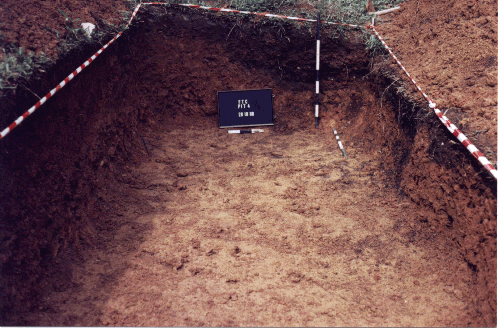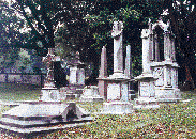All carbon is not created equal. The same element can have different
isotopes or atomic numbers---in effect, the weights of their nuclei differ. Carbon has
three isotopes, known as carbon 12, carbon 13, and carbon 14, often called simply C-12,
C-13, and C-14.
The carbon in the carbon dioxide we breathe, for example, is about 99 percent
C-12. The remaining one percent is virtually all C-13. That's fine, because the two
isotopes are the same element. The very rare carbon 14 is another matter, though, because
it is radioactive. By losing an electron, every atom of C-14 eventually will decay into an
atom of N-14; that is, it will turn into ordinary nitrogen. As radioactive
substances go, C-14 doesn't last long. Half of any number of atoms of carbon 14 will have
become nitrogen 14 after 5730 years have passed. That's simply another way of saying that
C-14 has a half-life of 5730 years.

Since the earth is more than four billion years old, all C-14 would have decayed into
nitrogen long ago if new C-14 atoms weren't being produced. Cosmic radiation zaps enough
atoms of ordinary carbon into the radioactive form to keep the planetary supply of carbon
14 at near 60 metric tons. That sounds enormous, but it's puny next to the worldwide total
of all forms of carbon in the atmosphere, biosphere, and fresh and salt waters, which
stands at about 40 trillion metric tons (that's 40 followed by twelve more zeros).
Growing plants make withdrawals from that limited supply of radioactive carbon. They must
assimilate carbon from the atmosphere's carbon dioxide, and they take in atoms of C-14
right along with atoms of stable carbon isotopes. The carbon gets built into the plants,
and then into any animal that eats the plants.
Right---that means every living thing is slightly, but measurably, radioactive. However,
the radioactive material is being built into the organism only while it lives. Dead plants
and animals don't breathe or build up their mass. From the moment of death on, all their
C-14 is on a one-way trip toward becoming nitrogen.

Knowing how much radioactive carbon a mammoth tooth would have contained when its owner
lived, a researcher with the right equipment can measure how much it now has and then
calculate how long ago the mammoth died. Charcoal from a hunter's campfire offers a
similar kind of radiocarbon clock. Thus, carbon dating---more precisely, radiocarbon
dating---lets us measure temporal distances into the past.

